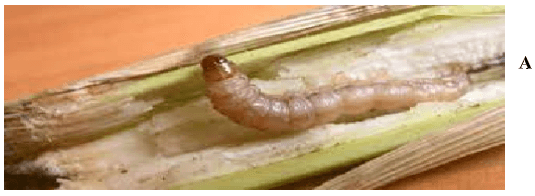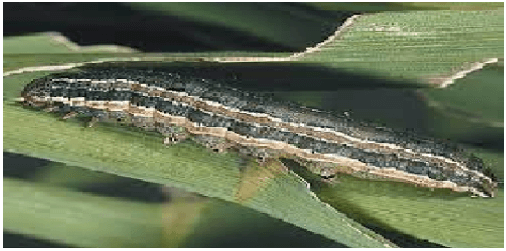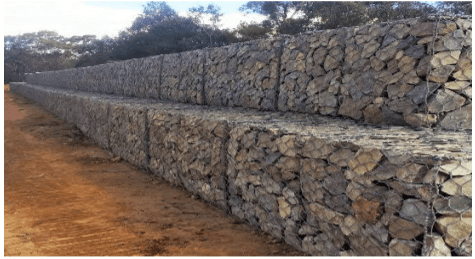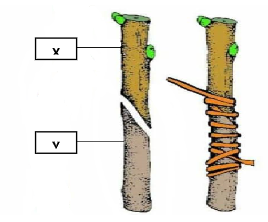INSTRUCTIONS TO CANDIDATES
- Answer all the questions in section A and B.
- Answer any two questions in the section
SECTION A (30MARKS)
Answer All the questions in this section
- Give two ways in crop rotation helps in weed control. (1mark)
- Differentiate mixed cropping and intercropping. (2marks)
- Give four advantages of intensive farming system. (2marks)
- Name three practices that help to attain optimum crop population after planting. (1½marks)
- Give two reasons why tsetse fly control is considered a land reclamation process. (1mark)
- Explain how leaching leads to loss of soil fertility. (1mark)
- Outline four observable indicators of economic development of a nation. (2marks)
- Give four methods of farming. (2marks)
- State four factors that should be considered when selecting a crop to grow in an area. (2marks)
- Identify four roles of calcium in crops. (2marks)
- Give two benefits of using certified seeds. (1mark)
- Give four benefits of tissue culture in crop propagation. (2marks)
- Give two ways in which mulching helps in water conservation. (1mark)
- Apart from tomatoes, name four examples of fruits and vegetables. (2 marks)
- Distinguish hardening and hardening off as applicable in crop production. (2marks)
- Give four ways of improving labor productivity in the farm. (2marks)
- What is production function? (1mark)
- Suggest five symptoms of viral infection in crops. (2½marks)
SECTION B 20 MARKS
(Answer ALL the questions in this section) - The diagrams below illustrate field pest of maize. Study them and answer the question that follows.


- Identify the pest labeled (2marks)
- Give one cultural method of controlling pest A (1 mark)
- Give the damage caused by the pest B (2marks)
- Study the diagram below and answer the questions that follow.

- Name the structure above (1mark)
- Give two ways in which the above structure helps in soil and water conservation. (2marks)
- State two reasons why the above structure is not commonly used as a soil conservation method. (2marks)
- Below is an illustration of crop propagation. Study it and answer the questions that follow.
- Identify the method of propagation above. (1mark)
- Identify the parts labelled (2marks)
- Give two advantages of the propagation method. (2marks)
- The table below shows the format of a farm record. Study it and answer the questions that follow.
Date
Disease
symptoms
Livestock
affectedCost of
treatmentRemarks
- Identify the record illustrated above. (1mark)
- State four uses of the record illustrated above. (4marks)
Section C (40 marks)
Answer any two questions from this section.
-
- Explain five causes of land fragmentation. (5marks)
- State five factors that can encourage soil erosion. (10marks)
- State any five methods of harvesting agroforestry trees. (5marks)
-
- State and explain four ways of classification of herbicides. (8marks)
- State and explain any six human factors that influence agriculture (12marks)
-
- Explain five ways in which a farmer can adjust to risk and uncertainties (10marks)
- Discuss any five factors that promote the rooting of cuttings. (10marks)
MARKING SCHEME
Section A.
-
- Breaks life cycle of host-specific weeds.
- Alternate deep-rooted and shallow-rooted crops.
- Alternating crops that are easy to weed with the one that is difficult to weed.
-
- Mixed cropping- Growing different crops on the same piece of land at specific sections, while intercropping is growing different types of crops on the same piece of land together.
-
- High yields.
- Maximum use of resorces.
- High quality produce.
- Suitable where land is limited.
-
- Thinning.
- Gapping.
- Weeding.
- Pests and disease control.
-
- Eliminates problem of Nagana/sleeping sickness disease.
- Minimizes cost of production.
- Makes place habitav=ble for man.
-
- Moves nutrients to the lower horizon of the soil beyond root zones.
-
- High per capital income.
- Improved infrastructure.
- Increased recreational facilities.
- Efficient production methods.
-
- Mixed farming.
- Normadic pastrolization.
- Shifting cultivation.
- Organic farming
- Agroforestry.
-
- Size of land.
- Climate.
- Type of soil.
- Capital availability.
- Farners taste/preference.
- Government policy.
-
- Help in grain formation.
- Raising soil ph.
- Help in plant cell formation.
-
- High yielding.
- Free-form diseases/pathogens
-
- Pathogen free.
- Many propgaules in small space.
-
- Reduces the rate of evaporation.
- Checks speed of run off hence increases water infiltration in the soil.
-
- Watermelo.
- Brinjal.
- Pumkins.
- Butternut.
-
- Hardening- Removal (breaking) of the top of onions prior to harvesting while hardening off is removal of the shed and reduction in watering regime to make them ready for transplanting.
-
- Supervision.
- Training.
- Use of machines.
- Proper remuneration.
- Improvement of welfare NHIF,NSSF.
-
- Physical relationship between output and input.
-
- Chlorosis/yellowing of leaves.
- Leaf curling.
- Mosaics (light green or yellow patches)
- Rosetting.
-
- A- Miaze stalk borer
B- Armyworm. - Field Hygiene
-Crop rotation - Eats the leaves hence lowering the photosynthesis area.
-Open wounds for secondary infection.
- A- Miaze stalk borer
-
- Gabbions/poron clams.
- Traps eroded materials.
-Checks the speed of run-off. - Expensive/High cost
-Special skills required which may not be available.
-
- Whip/tongue grafting.
-
- X- Scion
- Y-Root stock.
-
- Different compatible scions can be put on the same root stock.
- Seedless crops can be propagated.
-
- Health record.
-
- When to carry out management practices e,g vaccinations.
- when calling
- Identify the most prevalent diseases,
- Cost of treatment.
- When choosing breeding stock.
Section c.
-
-
- shifting cultivation.
- Accumulation of land holdings/buying and selling.
- Traditional system inheritance.
- Population pressure on limited area of land.
- Traditionally land may be offered to settle debts.(5 marks)
-
- High amount of intense rainfall.
- Steep slope
- Loose soil type/ sandy soil.
- Shallow depth.
- Lack of vegetation.
- Overstocking livestock.
- Deforestation.
- Clean weeding.
- Ploughing up and down the slope.
- Indiscriminate burning of vegetation.
- Planting annual crops on steep slopes.
-
- Lopping
- Pollarding.
- Coppicing.
- Thinning.
- Pruning.
-
-
- Formulation
- Time of application.
- Selectivity.
- Mode of action.
- Environmental factors.
-
- Level of education and technology.
- Health.
- Government policy.
- Economy.
- Cultural and religious beliefs.
- Transport and communication.
- Market forces.
-
-
- Diversification.
- Selecting more certain enterprises.
- Contracting.
- Rationing input.
- Modern production techniques.
- Insurarance.
-
- Relative humidity.
- Light intensity.
- Temperature.
- Rooting medium.
- Leaf surfac area
-
Download Agriculture Paper 1 Questions and Answers - Maranda High School Mock Exams 2023.
Tap Here to Download for 50/-
Get on WhatsApp for 50/-
Why download?
- ✔ To read offline at any time.
- ✔ To Print at your convenience
- ✔ Share Easily with Friends / Students

